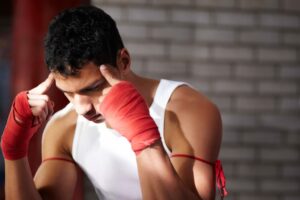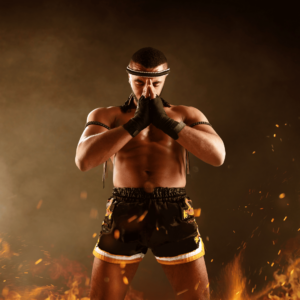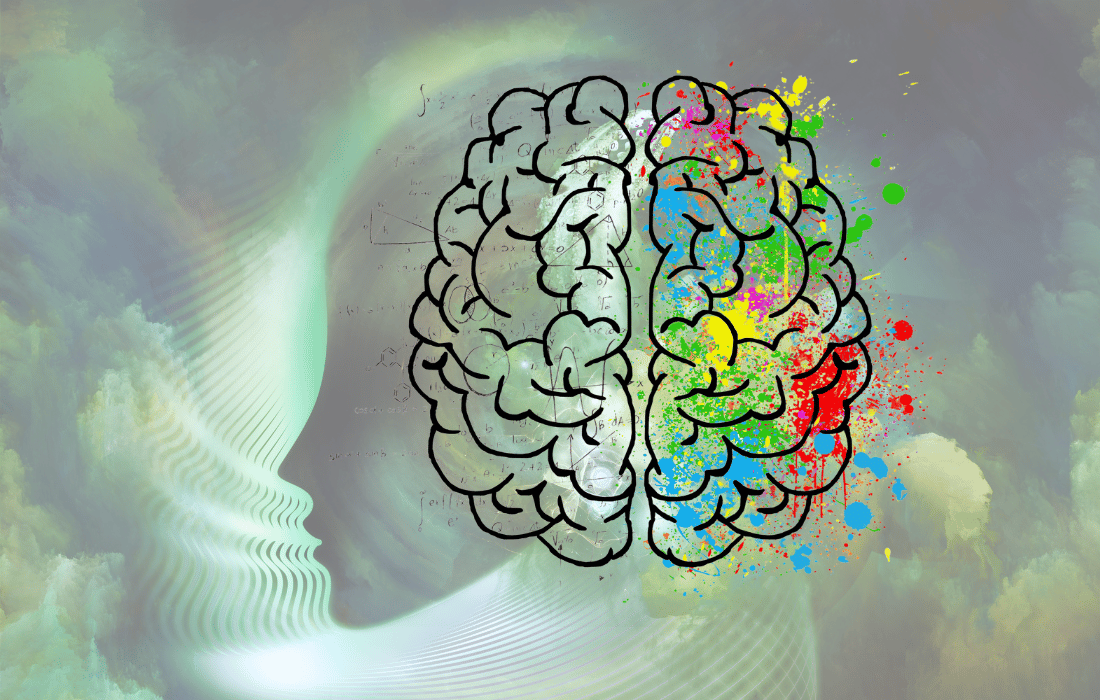In fringe sports—combat sports, action sports, extreme sports, and motorsport racing—athletes often rely on more than just physical prowess to achieve peak performance. Visualization, a mental technique where athletes rehearse their actions in their minds, has become a cornerstone of preparation. This practice allows them to feel at home during competition, achieving a state where their performance feels almost automatic and instinctual. But what is actually happening during visualization? How does it help athletes enter this “flow state”, and what role does mental and spiritual preparation play in this process?
Visualization: Crafting Mental Rehearsal for Success

Visualization involves vividly imagining performing a task or skill to enhance actual performance. Athletes in fringe sports use this technique to mentally practice their moves, anticipate challenges, and create a sense of familiarity with their competition environment. This mental rehearsal builds neural pathways in the brain, making the physical execution of these skills more fluid and automatic when it matters most.
Examples of Visualization in Fringe Sports
Cory Sandhagen: An Out-of-Body Experience
Cory Sandhagen, a prominent UFC fighter, exemplifies the power of visualization. During his fight with Chito Vera, Sandhagen described his experience as almost out-of-body, watching himself execute techniques he had meticulously rehearsed in his mind. In a discussion with Joe Rogan, Sandhagen elaborated on how visualization made him feel detached from the pressure of the fight, allowing his higher self to take over and perform precisely and calmly.
“It was almost like watching myself from the outside,” Sandhagen explained. “All of the distracting things that happen in a fight were completely ignored, and this higher being, better version of myself was running the show.”
Sean O’Malley: The Calm Assassin
Sean O’Malley, another UFC fighter, is vocal about his visualization practices. Known for his calm and clinical performances, O’Malley credits his mental rehearsals for his ability to stay composed, even under extreme circumstances. For instance, before his title fight against Aljamain Sterling, O’Malley suffered a severe rib injury. Despite this setback, he remained calm and executed the knockout exactly as he had visualized. O’Malley’s ability to let his higher self take control during the fight underscores the profound impact of mental preparation.
“It’s so weird but I kind of just allow myself to be taken over by my higher self and it’s hard to remember certain moments in there because I feel like I’m just flowing.”
Kelly Slater: The Surfer’s Flow
Kelly Slater, a legendary surfer, has mastered the art of turning on the flow state when needed. Slater uses visualization to ride waves, rehearsing his movements and strategies mentally. This practice allows him to react instinctively to the ocean’s dynamic environment. Slater’s ability to access flow state on demand demonstrates the integration of mental and physical preparation, making his performances seem effortless and natural.
“For me, it’s like time slows down. You become hyper aware of different things: the way the way is breaking, timing, putting yourself in the right part of the barrel.”
The Curious Phenomenon of Flow State
Flow state is a psychological state where an individual is fully immersed and engaged in an activity, often resulting in optimal performance. During flow, athletes experience heightened focus, reduced self-awareness, and a sense of effortless control. Neurochemically, flow involves the release of dopamine, norepinephrine, and endorphins, which enhance motivation, pleasure, and pain tolerance.
What Actually Happens During Flow State?
When athletes enter flow state, their brain’s prefrontal cortex, responsible for self-critical thoughts and doubt, quiets down. This phenomenon, known as transient hypofrontality, allows for the seamless execution of skills without conscious interference. The brain’s neural pathways strengthened through visualization and practice, facilitate automatic and instinctual actions.
The Four Stages of Flow
Understanding the stages of flow can help athletes and coaches recognize and cultivate this state more effectively:
Struggle Phase: This is the initial phase where athletes push themselves beyond their comfort zones. It often involves frustration and effort as they work to master new skills or overcome challenges. This phase is crucial for setting the stage for flow.
Release Phase: After the struggle, athletes begin to let go of conscious control. They trust in their training and preparation, allowing their subconscious to take over. This release is a key trigger for entering flow state.
Flow State: In this phase, athletes experience complete immersion in the task. Time may seem to slow down or speed up, and they perform at their peak without conscious effort. This is the “zone” where everything clicks into place.
Recovery Phase: Following the flow state, athletes need time to rest and recover. This phase involves brain rewiring and memory consolidation, where the experiences and learnings from the flow state are integrated into the athlete’s skill set.
The Neurochemistry of Flow
The flow state is supported by a complex interplay of neurochemicals that enhance focus, motivation, and pleasure:
Norepinephrine: This neurotransmitter is responsible for concentration and vigilance. It sharpens focus and enhances the ability to respond quickly to stimuli.
Dopamine: Known for its role in reward and pleasure, dopamine also enhances cognitive alertness and motivation, making tasks more enjoyable.
Endorphins: These natural painkillers help athletes push through physical discomfort, providing a sense of euphoria and well-being.
Serotonin: This neurotransmitter balances mood and contributes to feelings of satisfaction and calmness.
Anandamide: Often called the “bliss molecule,” anandamide promotes feelings of joy and helps regulate mood and pain.
Oxytocin: Known as the “love hormone,” oxytocin enhances feelings of trust and social bonding, contributing to the positive afterglow of flow experiences.
Mental and Spiritual Preparation: Beyond Physical Training
While physical preparation is crucial, mental and spiritual preparation play equally significant roles in achieving a flow state. Top-tier athletes understand that the mind and spirit are integral to their performance, often dedicating time to practices like meditation, mindfulness, and visualization.
The Mental Aspect
Athletes often say that certain sports are “90% mental.” This statement highlights the importance of mental preparation in achieving peak performance. Mental training involves building focus, resilience, and confidence through techniques like visualization, positive self-talk, and mental rehearsal. By training the mind, athletes can maintain composure under pressure, make split-second decisions, and enter flow state more readily.
highlights the importance of mental preparation in achieving peak performance. Mental training involves building focus, resilience, and confidence through techniques like visualization, positive self-talk, and mental rehearsal. By training the mind, athletes can maintain composure under pressure, make split-second decisions, and enter flow state more readily.
“The mind is everything. What you think, you become.” – Buddha
The Spiritual Aspect
For many athletes, the spiritual aspect of preparation involves connecting with their higher self or inner wisdom. Practices such as meditation, mindfulness, and breathwork help athletes achieve a state of mental clarity and presence. This spiritual preparation allows them to transcend the physical limitations of their bodies and access a deeper level of performance, often described as being “in the zone.”
“It’s not just about the physical training; it’s about training the mind and spirit to be in harmony with the body.” – Kelly Slater
Meeting Flow State in Training and Competition
Flow state is not reserved for competition alone; it can be cultivated during training as well. Athletes who consistently enter flow during practice sessions can more easily access this state during competition. Training with intentional focus, setting clear goals, and maintaining an optimal challenge-skill balance are essential for achieving flow regularly.
Practical Techniques for Achieving Flow State
Visualization: Athletes use visualization to create mental blueprints of their performance. By imagining every detail, from the environment to the sensations, they build confidence and familiarity, making actual performance feel like second nature.
“If you can see it in your mind, you can hold it in your hand.” – Bob Proctor
Mindfulness and Meditation: These practices help athletes stay present and focused, reducing distractions and enhancing their ability to enter flow. Regular meditation trains the mind to quiet down, facilitating seamless execution of skills.
“Meditation is the key to being in the present moment.” – Dalai Lama
Breathwork: Controlled breathing techniques calm the nervous system and improve focus. Deep, rhythmic breathing can help athletes maintain composure and enter flow during high-pressure situations.
“Breath is the bridge which connects life to consciousness, which unites your body to your thoughts.” – Thich Nhat Hanh
Routine and Rituals: Pre-performance routines signal to the brain that it’s time to enter flow. These rituals create a sense of comfort and familiarity, reducing anxiety and enhancing focus.
“Rituals are the formulas by which harmony is restored.” – Terry Tempest Williams
Positive Self-Talk: Replacing negative thoughts with affirmations builds mental resilience and confidence. Positive self-talk reinforces the belief in one’s abilities, crucial for achieving flow.
“The words you speak become the house you live in.” – Hafiz
Conclusion
Visualization and mental preparation are powerful tools for athletes in fringe sports, allowing them to achieve flow state and perform at their peak. By integrating physical, mental, and spiritual practices, these athletes can transcend their limitations and access a state of effortless control and focus. Whether it’s Cory Sandhagen’s out-of-body experience, Sean O’Malley’s calm under pressure, or Kelly Slater’s instinctual surfing, the ability to enter flow state is a testament to the synergy between mind and body. As athletes continue to explore and refine these techniques, the mysteries of flow state will become increasingly accessible, paving the way for extraordinary performances in the world of fringe sports.







